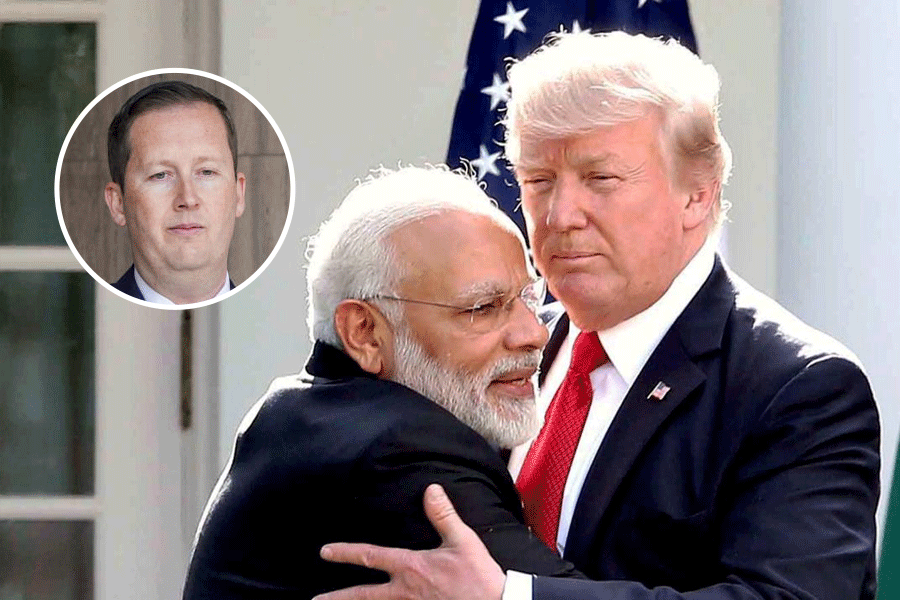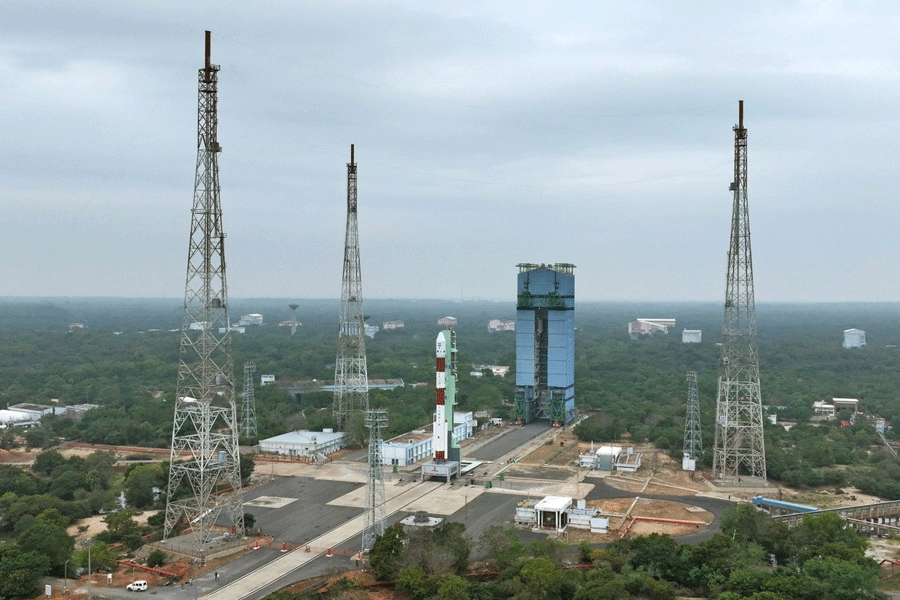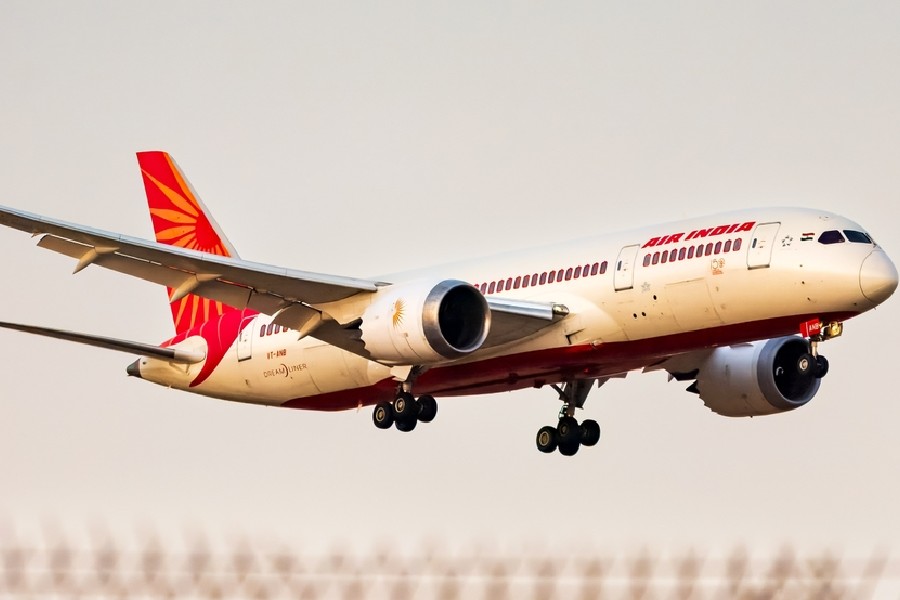What would you be upgrading your drive to the next time you change your vehicle? Or, for that matter, if you are in the market for your first four-wheeler, what is it likely to be? Going by the way automakers are falling over each other to roll out compact SUVs, if the entry-level or thereabouts is the segment that you are shooting for, chances are that you will be writing out a cheque for one of them. Or, at least that’s what the car companies expect you to do. And not without reason.
IT’S A FLOOD
Yes, this has been a crazy year that included a month, April 2020, with zero car sales in the country. But take a look at the latest numbers, for October 2020, and buyers seem to be out in force buying all sorts of cars and SUVs and, among them, compact SUVs in increasingly larger numbers.
The Maruti Suzuki Vitara Brezza, in its new BS6 petrol avatar, sold 12,087 units, followed closely by the new entrant, Kia Sonet, which had just been launched the previous month, at 11,721 vehicles. The Hyundai Venue, which created quite a stir at its launch last year, notched up 9,020 sales. Next up was the Tata Nexon with 6,882 units, followed by the Mahindra XUV300 with 5,895 and the Ford EcoSport with 4,599.
Toyota, meanwhile, has not said how many of its Urban Cruisers — its rebadged and cosmetically changed version of Maruti Suzuki’s Vitara Brezza that it launched at the end of September — it has sold, but Mahindra has said that it has 15,000-plus bookings for its second-generation Thar that it launched on October 2 and made the first delivery this month.
Now, while the older Thar may not have been a ready fit into this segment as it was a rugged go-anywhere vehicle, the new vehicle has been totally redone and creature comforts added to make it a serious contender in this segment, with some genuine offroading ability thrown in for some additional cash, of course.
According to a report by Emkay Global: “Competitive intensity has increased in compact UVs, led by the success of Kia Motors and Hyundai models, resulting in market share losses for incumbents such as Mahindra and Maruti Suzuki. Tata Motors is witnessing robust volumes and market share gains supported by good response to new products.”
MORE TO COME
And the action is far from over. Waiting in the wings is the Magnite from Nissan that has had a global unveil towards the end of October but for which the manufacturer is yet to announce the prices or start taking bookings. Also waiting to roll out, most likely early next year, is the Kiger from Renault, which is likely to have much the same underpinnings as the Magnite as it would be built on the CMF-A+ platform.
And if this wasn’t enough, later next year, we are likely to see an even more compact SUV from Tata Motors that has now been named HBX. It is expected to go head-to-head with hatchbacks since that is the price point Tata Motors is aiming for. Jeep, which has been exploring how best to launch a sub-four-metre SUV in India, has one under development now but might take a bit of time coming.
STEADY SHIFT
Goldstein Market Intelligence, a research company, which published the report (India Compact SUV (Sports Utility Vehicles) Market Analysis 2017-2025: Industry Trends, Growth, Sales Data, Export/Import, Revenue, & Market Opportunity Assessment With COVID-19 Impact | Forecast Period 2017-2030) in September 2020, says: “After many years of fascinating over small passenger vehicles, automakers in one of the fastest growing economies are now moving towards the compact sports utility vehicles and multi-utility vehicles (MUVs). Over the past five years, their sales have blown-up, accounting for one in every four passenger vehicles sold by India’s $74-billion automobile industry. In 2010, UVs and compact SUVs constituted just about 14 per cent of the complete passenger vehicle sales. Currently, they account for more than 25 per cent, the recent data from industry body Society of Indian Automobile Manufacturers (SIAM) shows.”
It also says that much of the latest explosion in UV sales has been led by compact SUVs such as the Maruti Suzuki Vitara Brezza, Ford Ecosport, Renault Duster and Tata Nexon.
By way of explaining the phenomenon, Goldstein says: “There are two major factors for the triumph of utility vehicles, particularly SUVs. Sports utility vehicles, especially compact SUVs, have become affordable for the Indian consumer. Secondly, there has been a conscious determination from the auto-makers to introduce more SUV models in the Indian market. The automakers are fine-tuning the car designs and bringing innovations that are suitable for Indian conditions. Moreover, it is expected that compact SUVs will emerge as the second-biggest segment in the Indian market during the forecast period [2017-30].”
The current fiscal year, then, has seen a lot of activity in a short span of time, made even shorter by the months lost to Covid-19. One of the reasons for that is companies are finally catching up with the shift in consumer preferences.
The Renault Duster was the creator of the compact SUV segment in India and Ford followed in a couple of years with the EcoSport. The success of these two products showed the others that this was the segment to be in, but manufacturers did not have the products. This category is also partly the creation of the Indian excise and, then, the goods and services tax (GST) system that puts a lower levy on sub-four-metre vehicles; companies shoot for this to stay in the reckoning in a highly price-competitive market. So they got into this space one by one as their vehicles became ready.The Maruti Suzuki Vitara Brezza, the Honda WR-V (this was given a facelift and upgraded to BS6 recently), Mahindra XUV300 and TUV300, and so on were all created to appeal to this buyer. By next year, most automakers in India will have at least one compact SUV in their line-up.
THE PULL FACTOR
The appeal of the compact SUV has been attributed to various reasons, but some important ones are that they offer a bit more room than hatchbacks of similar length since these vehicles tend to be a wee bit wider, are expected to handle bad roads better since they stand higher above the tarmac than hatchbacks, give the driver better all-round visibility, a greater wading ability in waterlogged areas, and a greater sense of safety in a country known for bad driving. Global NCAP, for instance, has rated the Tata Nexon and Mahindra XUV300 5-star (maximum) and the Maruti Suzuki Vitara Brezza 4-star in crash tests.
Says Gurgaon-based writer Veena Venugopal, who has been driving a Hyundai Venue for nearly a year now: “It is the size that I like. In the Delhi-Gurgaon area, where, if it rains for two minutes it gets waterlogged, I wanted an SUV type car so that it is a little more rugged and hardy than my previous car (Hyundai Santro) was. The other option was a sedan, which I feel is too low. And I didn’t want a big, fat SUV because 95 per cent of the time I am the only person in the car.”
Also, an important reason is that these vehicles are big on features now and many things that were earlier the preserve of much more expensive vehicles are now available in these compact SUVs. A telling one is the tyre-pressure monitor in the Kia Sonet, six or more airbags on quite a few, and connectivity, now increasingly with remote IOT (Internet of Things) capabilities. These things are only likely to widen their already substantial appeal. The best part is that all this is available in a package that’s usually just a shade bigger than a B-segment hatchback and, therefore, manageable in crowded cities and narrow streets. Also, their prices are similar to or just a little bit more than that of compact hatchbacks, and it wouldn’t break the bank to shell out the additional loan instalment that a bulk of buyers pay.
Calcutta jeweller Nikunj Lodha has recently bought a top-end Kia Sonet to replace his B-segment hatchback. He says: “The pull factor was that it is a compact SUV but it has all the features. It has all the safety features plus it has a sporty look.” As to why he preferred it over a sedan, he says: “First of all, it (the Sonet) is easy to move out of and move into, the ground clearance is good, and you can drive it anywhere you want since it has a small (turning) radius.”
A Calcutta-based Sonet buyer who declined to be named says his top-end Sonet has all the bells and whistles like a Bose sound system, while it is small and easy to park, manoeuvres well and looks good.
THE DRIVE AHEAD
As trends go, it is difficult to compare last year to this one for Covid-19-related reasons, but top sellers are racking up the numbers. The Vitara Brezza averaged about 10,000 vehicles a month during the last fiscal year, and looks like it might repeat that performance this year. Other models like the Venue, Nexon and XUV300 have also done better than last year averages during the last two months. So the question is: Where to now?
For an answer, it may not be inappropriate to look at higher price segments where SUVs have been introduced. Much of the sales volumes that made up the segment comprising the likes of the Toyota Camry, Honda Accord and Skoda Superb have gradually gone to models like the Toyota Fortuner, Ford Endeavour and so on. A bit down the order, the Hyundai Creta, Kia Seltos and Jeep Compass are giving sedans a tough fight with the top-selling SUV outselling the sedan market leader by more than a factor of three.
While that has not happened in the compact SUV segment yet, at their price points they still trail sedans and hatchbacks, companies are looking at pushing out ever smaller SUVs or vehicles styled like them to net buyers. Maruti Suzuki has tried it with the S-Presso at the entry level. Tata Motors HBX is also a case in point — it is expected to go on sale in mid-2021 at a price point of around Rs 5 lakh that will rival hatchbacks.
SUV-isation, so to speak, is a global trend that goes right across the spectrum. Starting from broad-category segments like the Indian sub-four-metre and the European supermini (sub-4.2-metre) it goes up to vehicles like the Rolls-Royce Cullinan, Bentley Bentayga and even the Lamborghini Urus at the pointy end.
Says research company Future Market Insights: “The India SUV market is anticipated to grow at a staggering growth rates in the next decade. As more people make the transition from an entry-level car to a compact SUV, sales are expected to remain healthy. Further, many prospective Indian buyers are today more inclined to buy an SUV vis-a-vis a hatchback, which will also contribute to the growth of this market.” It adds: “It is projected that in the next decade, SUVs may account for nearly 40 per cent of India’s PV [passenger vehicle] segment.” And for that to happen, your next or even first buy will have to be a compact one. Enjoy the drive.
The Frontrunners
MARUTI SUZUKI VITARA BREZZA
The change of emission norms from BS4 to BS6 in April meant a fairly big change for Maruti Suzuki’s bestseller, which is also the market leader in this segment now. It went from a diesel-only model to a petrol-only one, but with virtually no break in the sales momentum other than the one brought about by the Covid-19 pandemic. Last fiscal it clocked sales of about 10,000 vehicles a month and is now trying to creep up to that level again, having taken hits in the first four months of this fiscal. Still, there’s enough time to make up the gap.
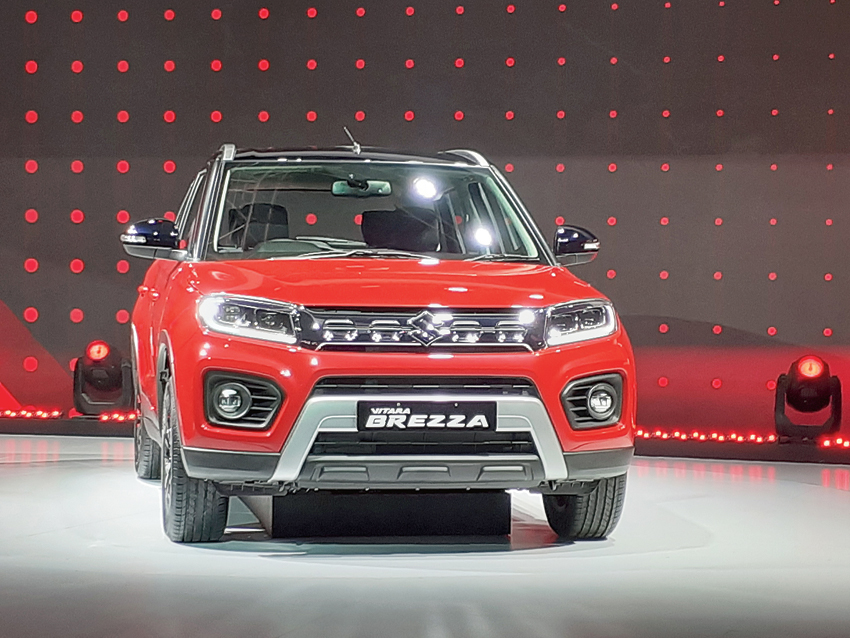
MARUTI SUZUKI VITARA BREZZA Pictures: The author, companies and agencies
KIA SONET
This has been in the market for just a couple of months and has already created quite a stir. It became the segment leader in its launch month and was No. 2 last month. There’s something for everyone as it offers a wide array of engines and transmissions and the top-end, fully-loaded ones are even priced higher than some other bigger vehicles. But the less pricey options are the ones to go for and it excels in terms of quality and the premium feel it conveys. The diesel is very good.
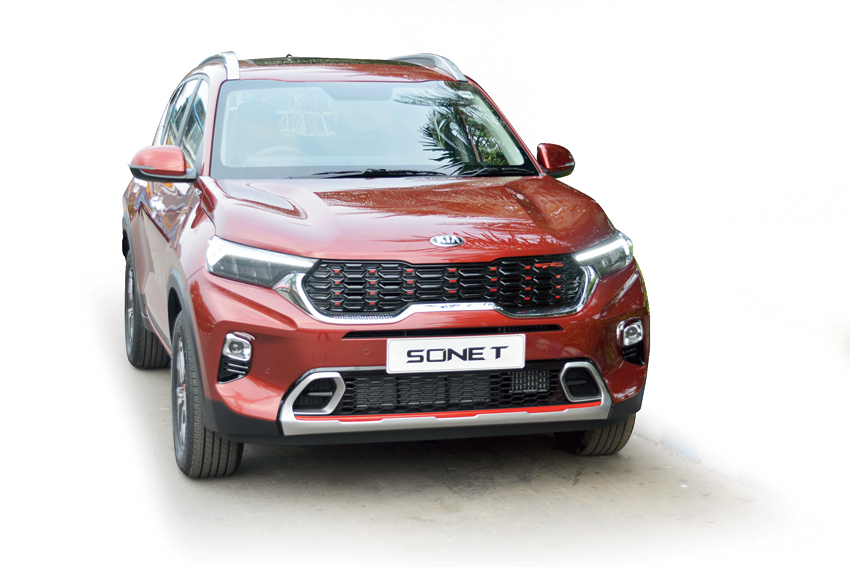
KIA SONET Pictures: The author, companies and agencies
TATA NEXON
This is Tata’s first compact SUV and also the first one in the country to get a 5-star crash test rating from Global NCAP. The styling is quite distinctive and even though not too old, it is been given a facelift this year following the launch of the Nexon electric vehicle. Fairly big on connectivity features, it has been doing quite commendably in the market and is continuing to notch up the numbers in market that has been rather fickle of late, where lots of cars were chasing not that many buyers.
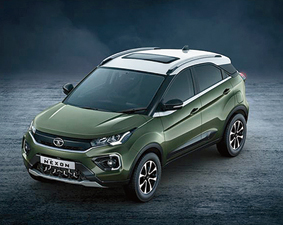
TATA NEXON Pictures: The author, companies and agencies
HYUNDAI VENUE
Launched last year, it proved a hit in the market and quickly shot up to number two behind the Vitara Brezza. Very well made and offering typical feature-rich Hyundai packages, it is also sold in both petrol and diesel versions and shares a lot of the mechanicals with the Sonet. This year, it has been given a gearless manual shift (iMT in Hyundai parlance) option on the turbocharged one-litre petrol variant. So far it has remained in the top three in this segment.

HYUNDAI VENUE Pictures: The author, companies and agencies
The Other Contender
MAHINDRA THAR
In terms of size, this one qualifies as a compact SUV, but it is quite a different beast with its genuine hardcore offroading capabilities. In terms of price it is more expensive than the general cut of sub-four-metre SUVs. But in this second model of the Thar, Mahindra has rounded some of the sharper edges and thrown in some creature comforts so that it is good on the road too and not just off it. The music system is now on the ceiling and also has an automatic version along with the good, old-fashioned manual. What’s not to like?

MAHINDRA THAR Pictures: The author, companies and agencies
Electric Options
TATA NEXON EV
Rolled out early this year, this is the first EV in the compact SUV segment in India. Refined, peppy and quite fun to drive, the only thing that is a bit daunting is the upfront price of the vehicle, which should, however, even out over the life of the vehicle. This one carries the ethos of current EVs across the world, of them being competent vehicles that don’t look like something geeky and oddball and drive as well as if not better than their siblings with tailpipes.
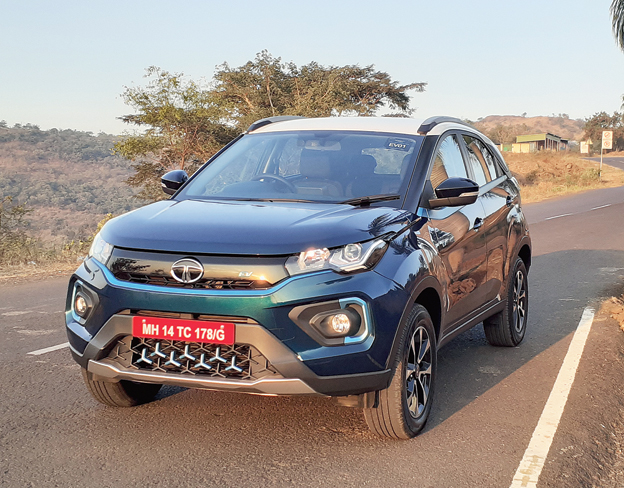
TATA NEXON EV Pictures: The author, companies and agencies
MAHINDRA EXUV300
This is one of the EVs showcased by Mahindra at Auto Expo 2020. It uses the company’s own electric vehicle platform, Mahindra Electric Scalable and Modular Architecture (MESMA), which will also be the basis for more vehicles from the company in future. This is likely to be the first proper competitor for the Nexon EV. Range would probably be in the region of 300km.
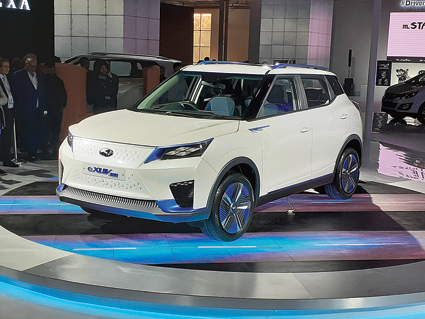
MAHINDRA EXUV300 Pictures: The author, companies and agencies
MAHINDRA EKUV100
Mahindra previewed this vehicle at the Auto Expo 2020 and even announced its price of Rs 8.25 lakh. However, the rolloutt of the vehicle has been delayed because of the Covid-19 pandemic and the subsequent lockdown. It is now expected next month. It is powered by Mahindra’s eFalcon electric powertrain. The motor makes 54ps of power and 120Nm of torque and the manufacturer says that the maximum range would be 147km. A fast charger can recharge the battery up to 80 per cent in 55 minutes.
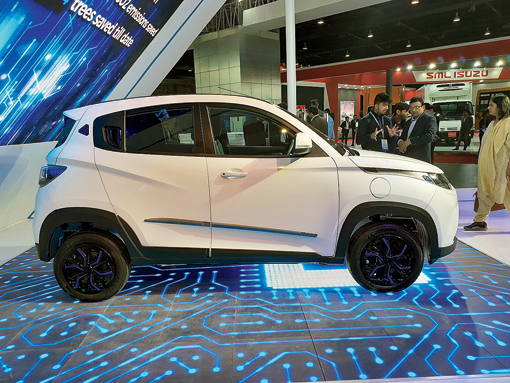
MAHINDRA EKUV100 Pictures: The author, companies and agencies
Waiting In The Wings
TATA HBX
This is going to be a very interesting vehicle to watch out for. Supposed to be in the Rs 5 lakh to Rs 8 lakh slot, it is smaller than the Nexon and would compete head to head in terms of price with B-segment hatchbacks. It is likely to win brownie points for its chunky looks from the Indian car-buying public who cannot seem to get enough of SUVs, no matter what size. It could possibly be powered by the 1.2-litre, three-cylinder petrol seen in all of the smaller Tata vehicles.
NISSAN MAGNITE
This is the first of a pair of vehicles built with the same underpinnings that will be hitting the market most likely next year. This one is built on the CMF-A+ platform that was jointly developed by Nissan and Renault and, with the unveiling of the former, we have a fair idea of what this one is going to be about. Likely to be sold in India, Africa and the Middle East, this claims to have the best fuel efficiency in the class and would be powered by a turbocharged one-litre petrol engine.
JEEP 526
We know this would be a new vehicle and not a modified Renegade, which is what was expected in India in this slot but pulled back as it could not be made within the target price. This one, however, is expected with similar rugged looks that make it stand out as a Jeep but, say reports, is likely to be based on Fiat Panda 4x4 platform and, therefore, come with all wheel drive as well. It is, however, unlikely to be out before the end of next year or early the year after.
RENAULT KIGER
We hear this one is almost ready for a rollout and should hit the showrooms early next year. While it will have Renault styling, under the skin it would be pretty much the same as the Nissan Magnite and would have a one-litre petrol engine with versions with and without the turbocharger. This market is a tough one now and the situation is very different from when the Duster rolled out. The equipment list better be good on the Duster’s successor from Renault.


